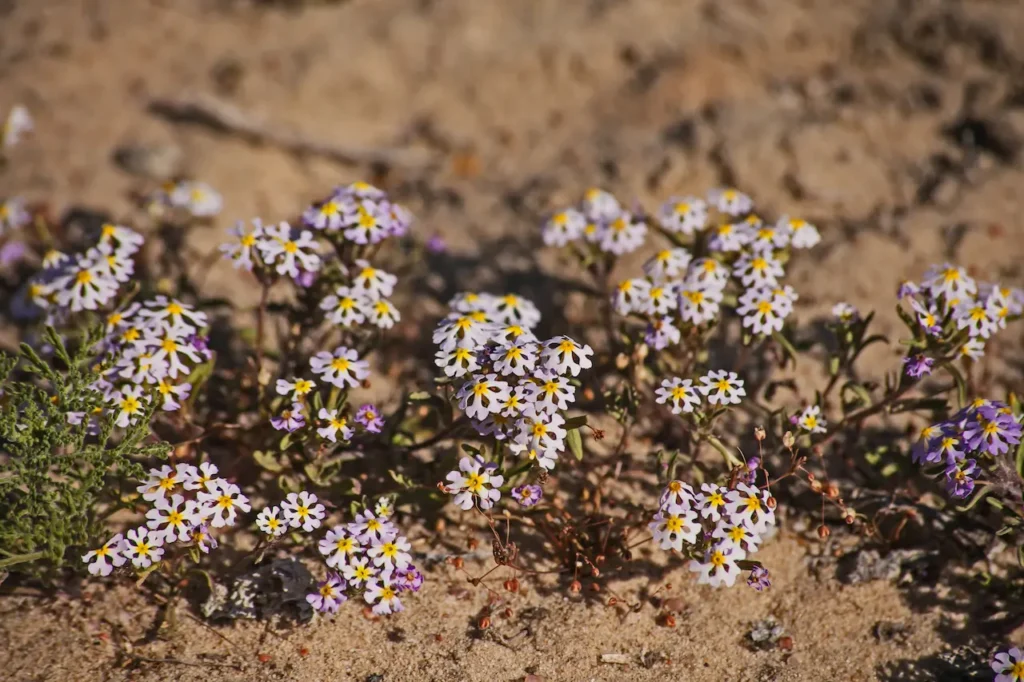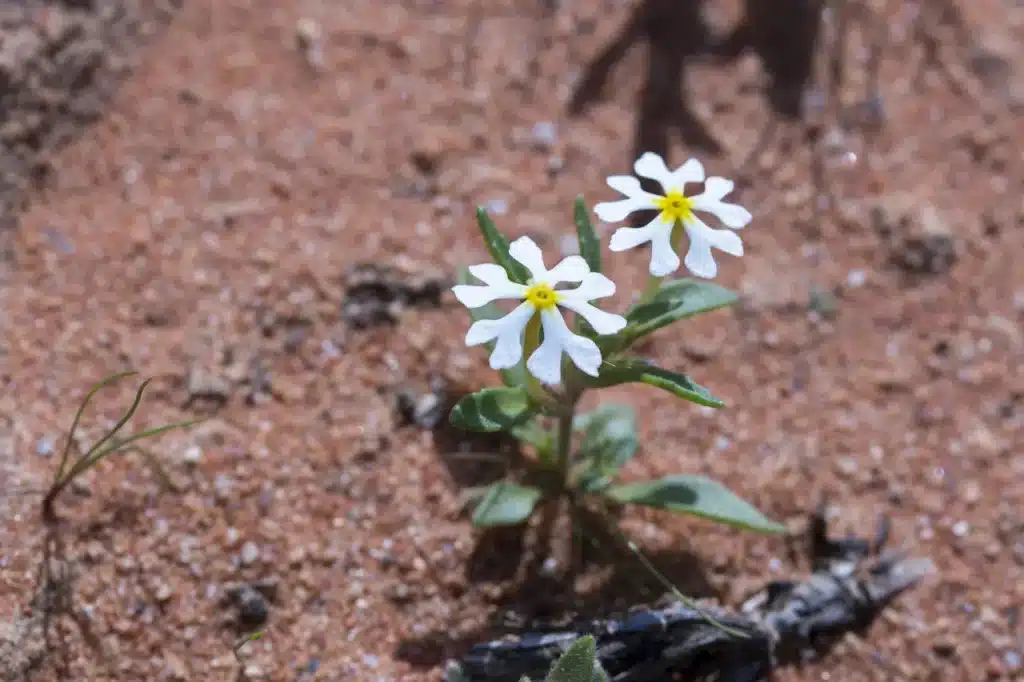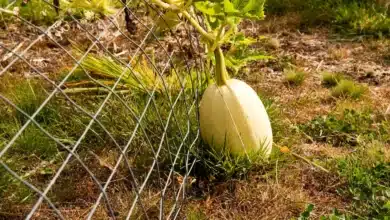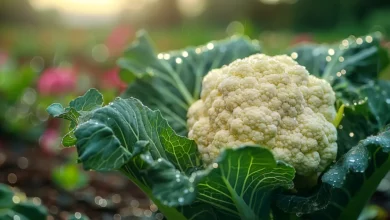How to Grow Zaluzianskya Capensis
How to Grow Zaluzianskya Capensis, Night Phlox
I can still remember the first time I came across the name Zaluzianskya trying to pronounce it silently in my head before daring to speak it out loud. Once you learn it, it’s impossible not to repeat it like a child learning a new word. Za-loo-zee-ann-ski-ya. This is a name you will remember, and you’ll at least impress your friends. This plant is not only fun to pronounce, but it also has a wonderful fragrance at night.
It may sound like the name of a Polish folk song, but it has a connection with Poland. The genus was named for the Polish botanist Adam Zaluziansky von Zallusian who lived during the late 1500s. While the name may seem a little long, it is a tribute to someone who has contributed to botany. The plant is a perennial container plant that has been used in Europe for centuries. However, it is still relatively uncommon outside of certain horticultural circles.
The Zaluzianskya genus contains over 50 native species of South Africa. Only a few of these species are grown as ornamentals, the most common being Z.capensis. But why should you grow this small, somewhat unassuming plant with a long and difficult-to-pronounce name? Answer: the fragrance.

The Alluring Fragrance Of Zaluzianskya Capensis
Daytime, the Zaluzianskyacapensis plant may not be very noticeable. When exposed to direct sunlight, the plant’s pure white, small flowers have a diameter of about a half-inch and are enclosed in rounded, maroon buds. Once the sun goes down, however, something amazing happens. The flowers begin to open at night, emitting a sweet, vanilla-like fragrance. The scent slowly fills up the air and adds a delightful touch to the evening garden. It’s not as strong as some garden writers claim and it isn’t strong enough to “waft” across the garden. Instead, it smells like a sweet can of Play-Doh.
This plant is even more fascinating because, like other night-blooming species, it is pollinated primarily by moths and nocturnal insects. These pollinators are attracted by the flowers that open in the evening and release their scent. Its nocturnal flowering pattern is perfect for those who enjoy evening gardening and want to enhance their outdoor space with fragrance. While the plant is not very noticeable during the daytime, its fragrance will draw visitors to the garden in the evening.
Growing Zaluzianskya Capensis from Seed
Growing Zaluzianskyacapensis from seed is easy. This is an excellent addition to any gardener’s collection who has a green thumb, and loves unique, aromatic plants. To ensure successful propagation, it is important to start the seeds indoors. To give your plants a good start, sow seeds 8-10 weeks prior to the last spring frost. Start your seeds indoors to give them the best chance for survival and development before being exposed to outdoor conditions.
After you have sown your seeds, ensure that they are receiving plenty of light. Grow them under grow light, which will keep the seedlings strong and healthy. Or, place them on a windowsill that receives direct sunlight. The more light that they receive, the faster their growth. To promote germination, keep the soil moist without being soggy. The temperature should be kept between 65-75degF (ideally 18-24degC).
It is important to pinch the growing tips back as the seedlings develop to encourage bushier development. This helps the plant develop more lateral stems. The result is a more full and attractive plant. When the second set leaves have formed, pinch the growing tips. This early action will encourage the plant to grow taller and more spindly, rather than spreading out. The more branches you have, the more flowers your plant will produce in the later part of the season.
Transplantation and Care
Transplanting your seedlings into their final location is the next step once they are large enough. The Zaluzianskyacapensis plant is best grown in containers. This allows for better soil control and makes it easier to move around the plant. If you are planting them in soil, make sure that it is well-drained. You can also amend the soil with organic matter to enhance its structure. Most gardeners prefer to plant Zaluzianskyacapensis in containers.
Choose a container with a minimum of 12 inches in diameter. Larger containers will give the roots room to grow, and you can plant more seedlings in one container for a fuller look. If you want to create an impressive display of flowers and scent, planting 5 to 6 seeds per pot will be ideal. The plants aren’t very showy in the daylight, but their beauty is undeniable when the sun goes down and the flowers begin to open.
Fertility and Soil Needs
Zaluzianskya Capensis is indigenous to the Namaqualand Region of South Africa. This region is known for its sandy, dry soils, and occasionally, droughts. It has adapted well to these conditions and thrives on soil that is well-drained with good air circulation. It’s important to use a soil mixture that replicates the natural conditions when growing Zaluzianskya. Choose a commercial potting mixture that is high quality and well draining, such as ProMix HP (High Porosity). This mix is perfect for plants of this type which require good drainage.
You can create your own mix by mixing 50% perlite and 25% sand. This will give you the desired level of porosity. Sand and perlite are added to the mix so that it doesn’t become compacted over time. This also allows for proper drainage of the roots. Remember that root rot can be caused by overwatering. Make sure that your container is equipped with drainage holes and that it doesn’t hold excess moisture.
Fertilizing Zaluzianskyacapensis every two weeks is beneficial during the growing period. Balanced fertilizers, like 10-10-10, or other formulations, provide nutrients for healthy growth, and will produce abundant flowers. Fertilizing your plants regularly will promote lush foliage and more blooms, which are essential to fully enjoy their fragrance.
Watering and Drought Tolerance
Even though Zaluzianskyacapensis comes from a region with frequent droughts, it requires regular watering. This is especially true during the growing seasons. Overwatering can cause root rot. To prevent waterlogging of the roots, allow the soil to slightly dry between waterings. This simulates the natural conditions of the plant, which are periodic periods of dryness between rain showers.
If you are growing Zaluzianskya containers, make sure to not let them sit in water. Standing water can cause root rot so ensure your container is well-drained. In hot weather the plant will need more frequent watering. However, make sure to let the soil dry out before adding any more water. Once established, the plant will tolerate droughts, so don’t worry if it gets a little dry during a heatwave.

Zaluzianskya Varieties
There are several varieties of Zaluzianskya that can be grown by gardeners who want something different. Each variety is unique, with its own characteristics, including flower size and fragrance. They can add diversity to any garden.
Zaluzianskya ‘Midnight Candy” is the most common cultivar, and it is an improvement on the species. ‘Midnight Candy has a larger number of flowers and is therefore a good choice for gardeners who prefer a profusion of blooms. The scent is as vanilla-like and sweet as the species. However, the greater flower production makes this a better choice for gardeners.
Zaluzianskya Ovata This perennial shrub is sometimes found in nurseries. It’s less fragrant than *Z.capensis* and the flowers are often open throughout the day. This variety can be a bit of a downer because its sticky leaves emit an unappealing odor when they are touched. Some gardeners compare it to the smell of a wet puppy. The flowers may still be beautiful, but the scent of the leaves can be off-putting for some.
Zaluzianskya Vilosa: Zaluzianskya VILOSA is a close relative to Z. capensis. It is almost as fragrant but has an almond-like fragrance rather than vanilla, which is typical for the species. Its leaves, like those of *Z.ovata* can emit a “wet-dog” smell if they are touched. This variety is best enjoyed at a distance.
Conclusion
Zaluzianskya Capensis* or Night Phlox is an aromatic and unique addition to any garden. It may not be a striking plant during the day but its vanilla-like scent that blossoms at night transforms any garden into a magical place. The sweet fragrance of *Zaluzianskyacapensis* fills the air, attracting pollinators at night. It adds mystery and intrigue.
It is easy to grow this plant from seed, and it thrives in soil that drains well. This makes it a great candidate for container gardening. Watering regularly, fertilizing occasionally, and pinching the growing tips back will help your plant grow into a fragrant, healthy centerpiece for your evening gardens.
Growing it for its fragrance, for the captivating nighttime display or just for the pleasure of saying the name is enough to make you happy. It will bring charm and joy to your garden in the years to come.




